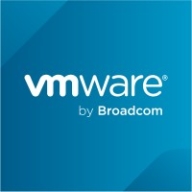

VMWare Tanzu CloudHealth and Nutanix Cloud Manager compete in cloud management solutions. CloudHealth has an edge in financial cost management, appealing to budget-conscious organizations, while Nutanix Cloud Manager shines with its integration and automation capabilities.
Features: VMWare Tanzu CloudHealth offers financial visibility, cost optimization, and policy-driven governance. Nutanix Cloud Manager provides multi-cloud control, automation, and integration, offering a holistic management approach.
Room for Improvement: CloudHealth could improve its deployment speed, integration options, and user interface. Nutanix Cloud Manager might enhance cost transparency, offer more customization, and simplify pricing structures.
Ease of Deployment and Customer Service: VMWare Tanzu CloudHealth requires more setup time but is supported by strong customer service. Nutanix Cloud Manager is known for intuitive setup and streamlined deployment with proactive support services, allowing quicker full-scale management.
Pricing and ROI: CloudHealth provides competitive pricing with immediate cost-saving potential, ideal for budget-focused organizations. Nutanix Cloud Manager's higher initial cost is offset by long-term ROI due to robust integration and automation features, offering a justified investment over time.
| Product | Market Share (%) |
|---|---|
| Nutanix Cloud Manager (NCM) | 5.2% |
| VMWare Tanzu CloudHealth | 1.9% |
| Other | 92.9% |


| Company Size | Count |
|---|---|
| Small Business | 24 |
| Midsize Enterprise | 23 |
| Large Enterprise | 64 |
| Company Size | Count |
|---|---|
| Small Business | 4 |
| Midsize Enterprise | 2 |
| Large Enterprise | 4 |
Nutanix Cloud Manager (NCM) is a cloud management tool that drives consistent governance across private and public clouds for its users. The solution brings simplicity and ease of use to managing and building cloud deployments by providing a unified multicloud management that addresses common cloud adoption challenges.
Nutanix Cloud Manager offers four key value drivers:
Nutanix Cloud Manager provides coverage for Nutanix private clouds as well as for VMware's. The solution also supports several popular public cloud providers, including Amazon AWS, Microsoft Azure, and Google Cloud Platform (GCP). NCM provides additional flexibility for users, as it is also available as a fully managed Software as a Service (SaaS). This product allows companies to benefit from all of Nutanix multicloud self-services, application automation, security compliance, and governance, without depending on Nutanix Cloud Infrastructure.
Nutanix Cloud Manager (NCM) Features
Nutanix Cloud Manager (NCM) has features in the four key categories already mentioned. Some of the main capacities of the solution include:
Nutanix Cloud Manager (NCM) Benefits
Nutanix Cloud Manager (NCM) provides its users with several benefits. These include:
Reviews from Real Users
An IT Operations at an energy/utilities company likes Nutanix Cloud Manager (NCM) because the product provides visibility, simplifies operations, and saves time and cost.
Drew P., a network systems administrator at Moda Health, rates NCM highly because the product saves man-hours with excellent speed on outcomes and provides a continuous validation process.
VMware Tanzu CloudHealth, formerly known as VMware Aria Cost Powered by CloudHealth, is a specialized cloud management platform tailored for Multi-Cloud Cost Optimization. It offers comprehensive visibility into cloud spending across various providers, enabling users to identify areas for optimization and make informed resource allocation decisions. With features like reserved instance management, resource rightsizing, and automated cost governance policies, it facilitates financial management for optimal cost efficiency. Beyond cost optimization, Tanzu CloudHealth enhances cloud operations through workload optimization and governance automation, catering to multi-cloud environments encompassing public, private, and hybrid clouds. Its primary focus remains on enabling organizations to effectively manage and reduce cloud expenditures while supporting operations across diverse cloud platforms.
We monitor all Cloud Management reviews to prevent fraudulent reviews and keep review quality high. We do not post reviews by company employees or direct competitors. We validate each review for authenticity via cross-reference with LinkedIn, and personal follow-up with the reviewer when necessary.